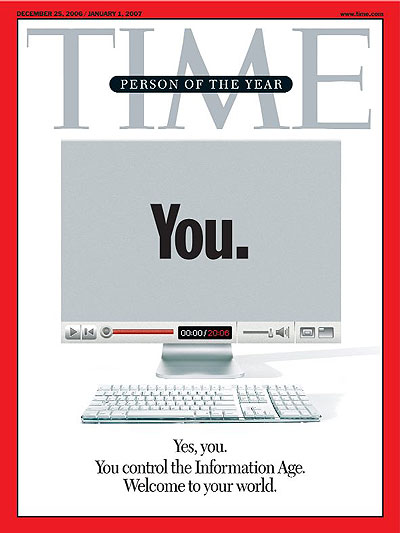The Year of Computing (more) Dangerously
Washington Post has a good article about computer security trends for 2006. I'm not going to link to the Washington Post though. I want you to read the version with the Bruce Sterling commentary....
The result is that even if law enforcement or security experts manage to take down the infected PC responsible for relaying traffic to one of the scam sites, the effect of that takedown is only temporary, as the attackers can simply substitute another computer they have gained control over. Such scams make it far more difficult for security experts to find the true location of phishing servers. (((I was actually sitting in an audience when Donn Parker predicted that things like this would be possible someday. I was so impressed that I put it in the last chapter of my book HACKER CRACKDOWN. There's a whole list of the guy's dark imaginings in there. They all came true and then some.))) Link--->
Highly recommended read
I am not one to post book reviews on my blog, but given how much I enjoyed this book and seeing how the author self-published it, I am going to make an exception. G33k Mafia is an incredibly fun high-tech caper novel set in present time on the West coast. It tracks the adventures of a group of high tech criminals that survive off the grid (fake identities, no taxes, etc.) and use modern technology and ingenuity to plot small, but profitable capers. A recently fired game developer is sucked into their world and falls in love with the de-facto leader and the lifestyle. I think Dakan nails the off-the-grid subculture and certainly captures the excitement and anticipation of the groups exploits. I'm recommending it to all my techie friends.
Warren Ellis to write on SL for Newsweek...
“Second Life is not only the biggest digital art installation in the world, but potentially the most radical shift yet in the way communities are formed online, and possibly also the germ of the next great operating system,” Ellis said. “It’s not only a place where people get as strange as they can, but an incubator for the future.” Link ---->
They don't have bodies, but they do leave footprints...
I am not sure the math isn't a little flawed, but an interesting, if not brilliant analysis:
If there are on average between 10,000 and 15,000 avatars "living" in Second Life at any point, that means the world has a population of about 12,500. Supporting those 12,500 avatars requires 4,000 servers as well as the 12,500 PCs the avatars' physical alter egos are using. Conservatively, a PC consumes 120 watts and a server consumes 200 watts. Throw in another 50 watts per server for data-center air conditioning. So, on a daily basis, overall Second Life power consumption equals... 60,000 kilowatt-hours....
Which, annualized, gives us [an average avatar consumption of] 1,752 kWh. So an avatar consumes 1,752 kWh per year..... [T]he average citizen of Brazil consumes 1,884 kWh, which, given the fact that my avatar estimate was rough and conservative, means that your average Second Life avatar consumes about as much electricity as your average Brazilian.
Which means, in turn, that avatars aren't quite as intangible as they seem. They don't have bodies, but they do leave footprints. Link--->
End of an Era
I've been reading Bruce Sterling in Wired magazine since their first issue. Over a few beers in the early 90's he pushed my analytical focus in a few very cool directions, for which I have always been grateful. I'll miss reading his articles in Wired, but his blog is still on my daily RSS sync.
One upshot is that futurism itself has no future. Once confined to an elite group, the tools and techniques of prognostication are all widely available. As for pundits: The world used to be full of workaday journalists, with just a thin sprinkling of opinion mongers. Now a TypePad account is a license to deliver nose-to-the-pavement perspective with an attitude. The very word futurism is old-fashioned, way too 1960s. Today's Internet-savvy futurist is more likely to describe himself as a strategy consultant or venture capital researcher. That development doesn't surprise me. Frankly, I saw it coming.
Another prediction of mine has come true: I've always known that one day I'd write my last column for Wired. You're reading it now. I'll continue to report my peregrinations via my blog at www.wired.com, where I'll continue to focus on harbingers of things to come.
As a futurist, I've often licked my chops over rather grim possibilities. But my lasting fondness for the dark side is a personal taste, not an analysis. I'm frequently surprised, and when I consider the biggest surprises, I'm heartened that they were mostly positive. The Internet, for instance, crawled out of a dank atomic fallout shelter to become the Mardi Gras parade of my generation. It was not a bolt of destructive lightning; it was the sun breaking through the clouds. Link
Second Life featured in the Economist
Including a rather interesting quote from Mitch Kapor:
It promises to be “disruptive”, says Mitch Kapor, the inventor of the Lotus spreadsheet that played a big role in the personal-computer revolution of the 1980s and 1990s. He is now chairman of Linden Lab. To him, Second Life is comparable to both the PC and the internet itself, which started as something “quirky” for geeks, and then entered and transformed mainstream society. “Spending part of your day in a virtual world will become commonplace” and “profoundly normal,” says Mr Kapor. Ultimately, he thinks, Second Life will “displace both desktop computing” and other two-dimensional “user interfaces”. As “a hothouse of innovation and experiment,” he says, Second Life may even “accelerate the social evolution of humanity.”
You can read the full article here.

